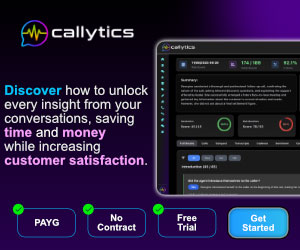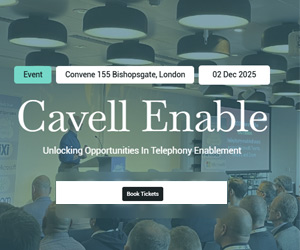Want to know how your customers feel about your service? Generally speaking, the easiest way is to simply ask them. In doing so, however, you risk spamming them with endless feedback requests.
So how do you find a balance and create a win-win situation? To find out, we asked our panel of experts for their top advice on collecting service feedback.
1. Stop Relying on a One-Dimensional View of How Customers Are Feeling

Sherlock
Surveys – a form of solicited feedback – provide valuable insights and are often the main form of feedback for organizations.
However, they’re not without challenges or blind spots -– they often have low response rates, sit on the extreme ends of the emotional spectrum (either extremely positive or negative), and more.
They also only offer a one-dimensional view of how your customers are feeling at that exact moment in time and are sometimes reflective of a perceived experience vs. the actual experience.
One way of ensuring you’re collecting all customer feedback effectively, and in turn reducing reliance on surveys, is through technology such as conversation intelligence that can capture unsolicited feedback, such as the conversations that happen within a contact centre.
Contributed by: Frank Sherlock, VP of International, CallMiner
2. Focus Your Efforts on the First and Last Experiences

Macmillen
Obvious choices for automatic feedback triggers include first experiences with new services and ‘last’ experiences: after resolution in a complex journey, ending a contract, changing provider and returning goods.
Firsts are largely about checking for operational effectiveness while lasts offer more business insights on customer satisfaction and loyalty.
Following up on this feedback is clearly important, but so is remembering to remove feedback cycles when they are no longer needed, e.g. when a new service has become established.
For long-term monitoring, offering a generic “feedback option” on digital touchpoints enables customers with strong feelings, most likely in a negative situation, to complete a structured or unstructured feedback form whenever they feel it is appropriate.
Contributed by: Finlay Macmillen, Junior Sales Executive, Odigo
3. Always Ask ‘What Do We Know Already?’ Before Reaching Out to Customers

Massey
When going into organizations, I’ve seen data buried on laptops in corners of the organization begging for attention, “I could have told you that” moments from hindsight stakeholders who genuinely are not surprised about what customers have said, and industries made out of monthly indices tracking for its own sake.
So, before asking customers for feedback, ask yourself:
- What do we know already?
- What do our frontline staff know already?
- What do our partners know already?
- What data gaps are we trying to fill and will this do that?
- When did we last ask?
- How can we ask, so that the customer feels special and wants to help?
Contributed by: Peter Massey, MD & co-founder at Budd UK Ltd
4. Keep It Simple With a Pop Up 1-5 Rating
There’s several challenges with getting feedback – if you leave it too long, the customer may have an unreliable memory. If you are seen to be annoying them for feedback, then they may down score you.
One solution to this is to make it seamless and easy to do. A quick pop-up at the end of a browser or web-based engagement asking for a 1-5 rating is often the simplest way to do this.
5. Offer a Charity Donation in Return for Feedback

Incentivizing customers to give feedback is a great fall-back. You may not want to offer large sums of money, but a token gesture can be appreciated.
Anecdotally, I’ve heard that some organizations doing well with this are ones that offer a donation to a choice of charities instead.
This not only makes the end-reviewer feel better about themselves, but it gives them a reason to leave a review.
From a company perspective, it’s a lot easier to administer than an ongoing series of micropayments to individuals too.
Contributed by: Chris Angus, VP, EMEA Contact Centre Engagement, 8×8
6. Proactively Monitor Social Media for Feedback Opportunities
Monitor social media platforms for mentions, comments, and reviews related to your brand.
By integrating feedback widgets into digital channels such as websites, mobile apps, and chat interfaces, you can provide customers with an easy way to share their thoughts and opinions.
You can then engage with customers proactively and solicit feedback in response to their posts, demonstrating a commitment to listening and addressing concerns.
7. Offer a Variety of Channels for Accessibility and Convenience

Polyakova
Effectively collecting customer feedback involves employing a multifaceted approach that respects the customer’s time and preferences, while demonstrating a genuine commitment to enhancing their experience.
Offering a variety of channels for feedback submission, such as email, SMS, website forms, and IVR surveys, allows customers to choose the method most convenient for them. This also accommodates diverse customer preferences and enhances accessibility.
It can also help to personalize feedback requests based on customer data and behaviour to foster a sense of individualized attention, increasing the likelihood of meaningful responses.
Contributed by: Tatiana Polyakova, COO, MiaRec
8. Stop Polling Customers After Every Interaction

Gormley
If you are collecting feedback, I believe you should focus on three key types:
Net Promoter Score (NPS)
For a more holistic understanding of the customer experience and only once every 3-6 months – not after every interaction! You can also use your CRM tools to register this.
Customer Effort Score (CES)
This measures effort over satisfaction, and it’s more insightful and more action-oriented.
Customer Satisfaction (CSAT)
Ask about specific interactions that matter and define these in advance. Again, avoid polling against the same customers twice in close succession.
Contributed by: Garry Gormley, Founder, CEO – FAB Outsourced Solutions
9. Capture Positive or Negative Customer Sentiment in the Moment

Carlson
Customer feedback is best taken in real time, receiving genuine in-the-moment reaction rather than having to chase down customers after the fact.
This is possible using artificial intelligence (AI), which can analyse an interaction while it’s occurring, monitoring the language the customer is using to note positive or negative customer sentiment.
It can also note what the customer is saying – maybe they are upset with the process to submit an application or the product they bought for their child is faulty.
AI can then compile findings across interactions to note common themes and give the organization the knowledge to be able to address it. This doesn’t require any extra work on the part of the consumer either.
Contributed by: Michele Carlson, Senior Product Marketing Manager, NiCE
10. Invite Customers to Workshops to Share Their Views

With customer feedback, there is the age-old problem of apathy. Customers usually only respond to surveys with an excellent or a poor score. Those in the middle ground cannot be bothered.
So, if you are trying to collect higher-value data that you can use to improve services and develop a greater understanding of performance from a customer’s perspective, then it is worth investing in fewer surveys.
We used to invite customers to workshops where they could share their views as part of customer panels.
Contributed by: Martin Jukes, Managing Director at Mpathy Plus
For more great insights and advice from our panel of experts, read these articles next:
- Top 10 Use Cases for Speech Analytics
- Need to Reduce Call Transfers? Try These Approaches
- Key Questions to Ask When Buying a Chatbot
Author: Robyn Coppell
Reviewed by: Xander Freeman
Published On: 18th Mar 2024 - Last modified: 23rd Oct 2025
Read more about - Customer Service Strategy, 8x8, Analytics, CallMiner, Chris Angus, Customer Feedback, Finlay Macmillen, Frank Sherlock, Garry Gormley, Martin Jukes, MiaRec, Michele Carlson, NiCE, Odigo, Peter Massey, Service Strategy, Tatiana Polyakova, Top Story







































